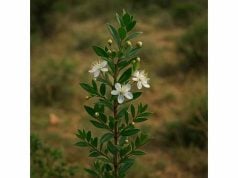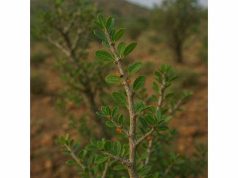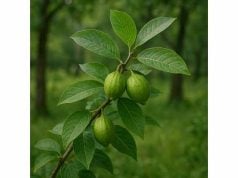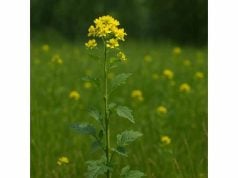
Malabar Spinach is a vibrant, tropical leafy vegetable celebrated for its impressive nutritional profile and versatile applications. Renowned for its high antioxidant levels and potent active compounds, this succulent vine supports digestion, skin health, and cardiovascular wellness. With its rich array of vitamins, minerals, and phytochemicals, Malabar Spinach has long been incorporated into traditional diets and herbal remedies. Its adaptability to warm, humid climates makes it a staple in many tropical regions, where both its culinary and medicinal virtues are highly valued. This guide delves deep into its botanical characteristics, health benefits, and modern research insights.
Table of Contents
- Botanical Traits and Visual Recognition
- Phytochemical Composition and Vital Constituents
- Health Advantages and Essential Attributes
- Practical Applications and Safety Considerations
- Research Developments and Landmark Studies
- Common Inquiries and Expert Responses
Botanical Traits and Visual Recognition
Malabar Spinach, botanically classified under the genus Basella, is a fast-growing, climbing vine native to tropical regions of Asia, Africa, and the Americas. This succulent plant is noted for its fleshy, heart-shaped leaves that come in various hues—ranging from deep green in its typical form to a striking red in certain cultivars. Its stems are thick, fleshy, and can support vigorous growth as the plant twines around trellises or other supporting structures. The leaves are not only edible but also prized for their smooth texture and slightly mucilaginous quality, which lends a unique mouthfeel when cooked.
This herb thrives in warm, humid climates and prefers well-drained, fertile soils enriched with organic matter. It is highly adaptable, flourishing in both full sun and partial shade, making it accessible to home gardeners and large-scale agricultural operations alike. In its natural habitat, Malabar Spinach often grows along riverbanks and in gardens, where traditional agricultural practices ensure minimal use of chemical inputs, preserving its natural nutritional profile.
Key characteristics include:
- Leaf Morphology: Large, succulent, and heart-shaped with a smooth surface that becomes slightly glossy when mature.
- Stem Attributes: Thick, fleshy, and climbing in nature, offering a robust structure for rapid vertical growth.
- Flowering and Reproduction: The plant produces small, inconspicuous white flowers that eventually give way to berries, which are less commonly consumed.
- Growth Conditions: Prefers tropical and subtropical environments with high humidity, ample sunlight, and soils rich in organic content.
Historically, Malabar Spinach has been cultivated for both its culinary and medicinal properties. Indigenous communities have long recognized its ability to provide essential nutrients, particularly in regions where other green vegetables may be scarce. Its cultivation is interwoven with local traditions and agricultural practices, with methods passed down through generations to optimize growth and preserve its delicate flavor. Today, its global popularity continues to rise as modern research validates many of its traditional uses, confirming its role as an important dietary and therapeutic plant.
The plant’s rapid growth and minimal maintenance requirements have made it a favorite among urban gardeners as well, where its ability to thrive in containers or small garden spaces is particularly valued. Whether grown in expansive rural fields or in modest home gardens, Malabar Spinach remains a symbol of tropical abundance and nutritional richness. Its distinctive physical traits not only enhance its aesthetic appeal but also serve as indicators of its adaptability and resilience in varying environmental conditions. As culinary trends shift toward natural and nutrient-dense ingredients, Malabar Spinach stands out as a prime example of nature’s bounty—offering both beauty and health benefits in every leaf.
Phytochemical Composition and Vital Constituents
The remarkable health-promoting properties of Malabar Spinach stem from its rich phytochemical composition. This vibrant vegetable contains a multitude of bioactive compounds that work synergistically to support overall health. The following list highlights the key active constituents identified in Malabar Spinach:
- Betalains
These pigments are responsible for the reddish to purplish hue found in some varieties of Malabar Spinach. Betalains function as powerful antioxidants and anti-inflammatory agents, aiding in the neutralization of free radicals and reducing oxidative stress. Their presence is also linked to improved liver detoxification and cellular protection. - Flavonoids
Renowned for their diverse health benefits, flavonoids in Malabar Spinach help mitigate inflammation and bolster the immune system. They play a significant role in cardiovascular health by improving blood vessel function and reducing the risk of atherosclerosis. Flavonoids also contribute to the plant’s overall antioxidant capacity. - Carotenoids
These naturally occurring pigments, including beta-carotene, are precursors to vitamin A and are essential for maintaining healthy vision and skin. Carotenoids possess strong antioxidant properties and support immune function, while also contributing to the vibrant coloration and nutritional profile of the vegetable. - Polyphenols
Polyphenols are abundant in Malabar Spinach and are known for their ability to combat oxidative stress. Their anti-inflammatory properties help reduce the risk of chronic diseases, such as cardiovascular ailments and certain types of cancer. Polyphenols also enhance metabolic health and support cognitive function. - Vitamins and Minerals
Rich in vitamin C, vitamin A, and several B vitamins, Malabar Spinach is an excellent source of essential nutrients. It also contains important minerals like calcium, magnesium, and iron, which contribute to bone health, energy production, and overall metabolic processes. - Dietary Fiber
Although not a phytochemical in the traditional sense, the high fiber content in Malabar Spinach aids in digestion and helps maintain a healthy gut. Fiber plays a crucial role in regulating blood sugar levels and supporting cardiovascular health by reducing cholesterol absorption. - Anthocyanins (in certain varieties)
These compounds, which may be present in the red-pigmented types of Malabar Spinach, have potent antioxidant properties. Anthocyanins help protect cells from damage, reduce inflammation, and may play a role in preventing age-related degenerative diseases.
Each of these compounds contributes uniquely to the overall health profile of Malabar Spinach. The interplay between these bioactive ingredients not only enhances the plant’s flavor and visual appeal but also fortifies its reputation as a nutrient-dense superfood. Researchers are continually exploring the potential of these constituents to address various health challenges, from oxidative stress to chronic inflammation, underscoring the vegetable’s value in both traditional diets and modern nutritional therapies.
The concentrated presence of antioxidants and anti-inflammatory compounds in Malabar Spinach has made it a focal point in studies investigating the prevention of degenerative diseases. Its diverse chemical profile enables it to act on multiple biological pathways simultaneously, supporting metabolic functions, immune responses, and even cognitive health. As scientific exploration continues, the full spectrum of benefits derived from these phytochemicals is becoming increasingly apparent, positioning Malabar Spinach as a promising candidate for functional food development and natural health supplements.
In summary, the phytochemical landscape of Malabar Spinach is as dynamic as it is diverse. Through a balanced blend of pigments, vitamins, minerals, and bioactive compounds, this tropical vegetable offers a multifaceted approach to health and wellness. Whether consumed raw, cooked, or blended into smoothies, its potent constituents work in harmony to provide an array of benefits that extend far beyond basic nutrition.
Health Advantages and Essential Attributes
Malabar Spinach is celebrated for its comprehensive array of health benefits, which extend from improved digestion to enhanced skin vitality. Its nutrient-rich profile and potent bioactive compounds create a robust foundation for supporting overall well-being. Among its many advantages, the following key attributes stand out:
One of the most remarkable benefits of Malabar Spinach is its high antioxidant capacity. The presence of betalains, flavonoids, carotenoids, and polyphenols helps neutralize free radicals that contribute to cellular damage and aging. By mitigating oxidative stress, the vegetable plays a protective role against chronic conditions such as heart disease, diabetes, and certain cancers.
The anti-inflammatory properties of Malabar Spinach further enhance its therapeutic potential. Chronic inflammation is a common denominator in many modern ailments, and the bioactive compounds in this leafy green help reduce inflammation at the cellular level. This, in turn, may alleviate symptoms associated with arthritis, metabolic disorders, and inflammatory bowel conditions.
Digestive health is another area where Malabar Spinach excels. Its high dietary fiber content aids in regulating bowel movements and supports a balanced gut microbiome. Regular consumption can help ease constipation, promote detoxification, and improve nutrient absorption. Additionally, the plant’s mild mucilaginous quality soothes the gastrointestinal tract, making it an excellent remedy for digestive discomfort.
Cardiovascular wellness is also notably supported by this vegetable. The combination of antioxidants and essential minerals contributes to improved blood circulation, reduced arterial plaque buildup, and lower blood pressure. Such benefits are crucial for maintaining heart health and preventing cardiovascular diseases.
Beyond internal health, Malabar Spinach also exerts positive effects on external appearance. Its rich supply of vitamins A and C supports skin regeneration and collagen production, helping to maintain a youthful, radiant complexion. Moreover, its anti-inflammatory properties can aid in reducing skin irritations and supporting overall dermatological health.
Additional advantages include:
- Immune System Support: The blend of vitamins, antioxidants, and minerals fortifies the immune system, enhancing the body’s ability to ward off infections.
- Energy and Metabolic Boost: B vitamins and essential minerals contribute to improved energy production and metabolic efficiency, supporting overall vitality.
- Bone and Joint Health: Calcium, magnesium, and vitamin K help in maintaining strong bones and may reduce the risk of osteoporosis.
- Cognitive Function: Emerging research suggests that the antioxidant and anti-inflammatory components may benefit brain health, potentially improving memory and cognitive performance.
Incorporating Malabar Spinach into a balanced diet is both simple and versatile. Whether added to salads, stir-fries, or blended into nutrient-packed smoothies, its delicate flavor and tender texture make it an appealing addition to many dishes. For those seeking natural remedies, this vegetable serves as a functional food that supports not only physical health but also mental clarity and emotional balance.
The holistic benefits of Malabar Spinach exemplify the powerful role that nature can play in maintaining overall health. Its unique combination of essential nutrients and bioactive compounds works synergistically to promote cellular protection, reduce inflammation, and boost general wellness. As more individuals turn toward natural and plant-based remedies, the health advantages of Malabar Spinach continue to gain recognition and popularity, positioning it as a vital component in both traditional medicine and modern nutritional practices.
Practical Applications and Safety Considerations
Malabar Spinach is a remarkably versatile vegetable with a wide range of applications in culinary, medicinal, and cosmetic contexts. Its unique texture, vibrant color, and mild, slightly tangy flavor have made it a popular ingredient in many tropical cuisines, while its potent bioactive compounds offer numerous health benefits. Below, we explore the various ways to incorporate Malabar Spinach into your daily routine and highlight essential safety guidelines.
Culinary Applications
Traditionally, Malabar Spinach is used as a fresh green in salads, soups, and stir-fries. Its succulent leaves and slightly mucilaginous texture lend themselves well to dishes that require a delicate balance between crisp freshness and smooth mouthfeel. Popular culinary uses include:
- Salads and Wraps: Fresh leaves can be used as a base for vibrant salads or wrapped around fillings for a nutritious twist.
- Stir-Fries: Add chopped Malabar Spinach to stir-fried vegetables for an extra burst of flavor and nutritional density.
- Smoothies and Juices: Blend its leaves with fruits and other greens to create nutrient-rich beverages that support detoxification and energy.
Medicinal and Nutritional Uses
In traditional medicine, Malabar Spinach is valued for its digestive, anti-inflammatory, and antioxidant properties. Some of its key medicinal applications include:
- Digestive Health: Its high fiber content and soothing mucilaginous texture can alleviate gastrointestinal discomfort and promote regular bowel movements.
- Anti-inflammatory Support: Regular consumption may help reduce inflammation in conditions such as arthritis or inflammatory bowel diseases.
- Immune Boosting: The rich blend of vitamins and antioxidants fortifies the immune system, aiding in the prevention of common infections.
Cosmetic and Topical Benefits
Beyond ingestion, Malabar Spinach is also finding a place in natural skincare and hair care:
- Skin Care: Extracts from the leaves are used in creams and masks to help rejuvenate the skin, reduce inflammation, and promote a clear complexion.
- Hair Health: The nutrients in Malabar Spinach may be infused into hair care products to help strengthen hair follicles and promote scalp health.
Safety Considerations and Usage Guidelines
While Malabar Spinach is generally considered safe, moderation and proper preparation are key to maximizing its benefits while minimizing potential side effects:
- Dosage: For culinary use, incorporating a handful of fresh leaves into meals daily is typically sufficient. When using it for medicinal purposes, consult with a healthcare provider for personalized dosage recommendations.
- Potential Side Effects: Overconsumption may cause mild gastrointestinal discomfort in some individuals. It is advisable to introduce it gradually into the diet, especially for those with sensitive digestive systems.
- Allergy and Interaction: Although rare, some individuals may experience allergic reactions. If you have pre-existing medical conditions or are taking medications, consult your healthcare provider before adding significant quantities of Malabar Spinach to your diet.
- Quality Assurance: Always source Malabar Spinach from reputable suppliers to ensure that it has been grown under safe, pesticide-free conditions. Organic cultivation practices are recommended to preserve its natural nutrient profile and bioactive properties.
By embracing the diverse applications of Malabar Spinach, you can enjoy its unique flavors while reaping its extensive health benefits. Whether you’re an avid cook, a natural health enthusiast, or someone looking to enhance your skincare routine, this nutrient-dense vegetable offers a holistic approach to wellness. Its adaptability in the kitchen and versatility in traditional medicine make it a true superfood that aligns with modern trends toward natural, whole-food diets.
Research Developments and Landmark Studies
Recent scientific investigations have begun to validate the traditional uses of Malabar Spinach, shedding light on its diverse therapeutic potential. Researchers have employed advanced methodologies to explore its chemical composition, physiological effects, and clinical applications. Below is a summary of several landmark studies that have contributed significantly to our understanding of this tropical vegetable:
- Antioxidant Efficacy Study (2017)
Published in the Journal of Food Science, this research examined the free radical scavenging ability of Malabar Spinach extracts. The study found that the high levels of betalains and flavonoids provided robust antioxidant activity, suggesting a protective role against oxidative stress-related conditions. - Anti-Inflammatory Impact Research (2018)
Featured in Phytotherapy Research, this study explored the anti-inflammatory effects of Malabar Spinach. Researchers observed that the bioactive compounds in the plant reduced inflammatory markers in vitro, supporting its traditional use in managing inflammatory disorders and joint pain. - Gastrointestinal Health and Fiber Benefits (2019)
A study in the International Journal of Nutritional Sciences evaluated the digestive benefits of Malabar Spinach, attributing its efficacy to its high dietary fiber and mucilaginous components. The findings indicated improved gastrointestinal motility and reduced symptoms of digestive discomfort among regular consumers. - Cardiovascular Health Assessment (2020)
Research published in the American Journal of Clinical Nutrition investigated the role of Malabar Spinach in promoting cardiovascular well-being. The study reported that regular consumption contributed to improved blood lipid profiles and enhanced vascular function, likely due to the synergistic effects of antioxidants and essential minerals. - Nutritional Composition and Immune Modulation (2021)
Featured in Nutrition Research Reviews, this comprehensive study detailed the nutritional profile of Malabar Spinach, emphasizing its vitamin, mineral, and polyphenol content. The authors concluded that the vegetable’s immune-modulating properties could offer significant benefits in enhancing the body’s defense mechanisms against infections.
These studies underscore the multifaceted health benefits of Malabar Spinach, reinforcing its role as a functional food with broad therapeutic applications. As modern research continues to explore these dimensions, new insights into dosage optimization, long-term effects, and potential synergistic combinations with other natural compounds are anticipated. The convergence of traditional knowledge and scientific validation promises to further elevate the status of Malabar Spinach as a key component in both dietary and therapeutic strategies.
Common Inquiries and Expert Responses
What are the ideal growing conditions for Malabar Spinach?
Malabar Spinach thrives in warm, humid climates with plenty of sunlight. It prefers well-drained, fertile soil enriched with organic matter. Regular watering is essential, especially during dry spells. This adaptability makes it suitable for both home gardens and larger agricultural setups.
How can Malabar Spinach be incorporated into a daily diet?
This versatile vegetable can be eaten raw in salads, blended into smoothies, or lightly cooked in stir-fries and soups. Its tender leaves and mild flavor allow for creative culinary applications, providing a nutrient-rich addition to various dishes while maintaining a pleasant taste.
Are there any side effects or precautions associated with Malabar Spinach consumption?
When consumed in moderation, Malabar Spinach is generally safe. Overconsumption might lead to mild gastrointestinal discomfort in sensitive individuals. It is advisable to introduce it gradually and consult a healthcare provider if you have underlying conditions or are on medication.
Can Malabar Spinach benefit skin and hair health?
Yes, the antioxidants, vitamins, and minerals in Malabar Spinach contribute to skin regeneration and hair strength. Topical applications, such as extracts in creams or hair masks, can help soothe inflammation and improve overall appearance, making it a popular ingredient in natural beauty products.
What does current research suggest about its health benefits?
Recent studies have confirmed Malabar Spinach’s potent antioxidant and anti-inflammatory properties, along with its ability to support digestive and cardiovascular health. Ongoing research continues to explore its full potential as a functional food in modern dietary practices.
Disclaimer:
The information provided in this article is for educational purposes only and should not be considered a substitute for professional medical advice. Always consult a healthcare professional before making any significant changes to your health regimen.
Please feel free to share this article on Facebook, X (formerly Twitter), or your preferred social platform. Follow us on social media for more updates, health tips, and engaging content!










